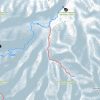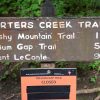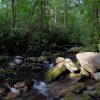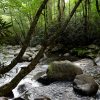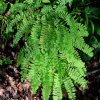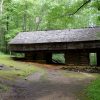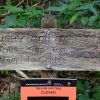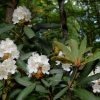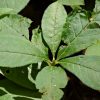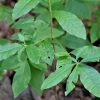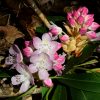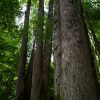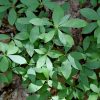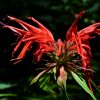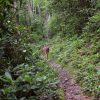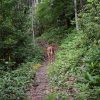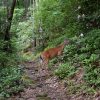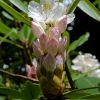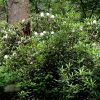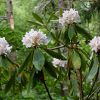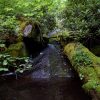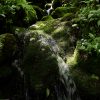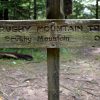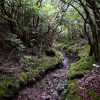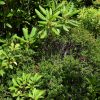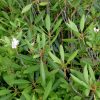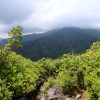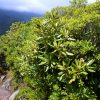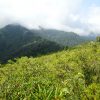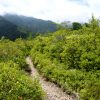Porters Creek – Trillium Gap – Brushy Mountain and back (18,5km/11.5M, 900m/2950ft elevation gain and loss)
The intention of this hike was to find out, if there is R. smokianum growing on Brushy Mountain. The suspicion was obvious. Although the mountain does not have any anakeesta rock satellite pictures clearly show a large treeless area on top of the mountain. This area can even be seen from the AT or from the Jump Off. Furthermore Brushy Mountain is part of the Mount Le Conte massif, where there is a lot of R. smokianum growing. Neighbouring Rocky Spur is also part of it, has no anekeesta rock, but R. smokianum grows there. Unfortunately I could not locate the species on Brushy Mountain. The whole summit was in fact treeless and full of ericaceous plants. However, since the mountain top was very much rounded and not steep at all there had not been landslides for ages here. So there had also not been any open rocky spaces for R. smokianum to germinate and grow. Nevertheless it was a nice and rewarding trip with uncounted blooming R. maximum throughout the hike. They were even growing on the sunny top of the mountain, here together with R. catawbiense and Kalmia latifolia. In few places on the summit there was even Kalmia buxifolia growing, an otherwise loyal companion of R. smokianum. Another interesting discovery was, that at lower elevations of the hike there were many undetermined azaleas in the forest. They had no flowers, but I think it could be R. calendulaceum or R. cumberlandense or both of them. One of the reasons why I am not sure about the correct name is, that in a very similar finding situation just a few kilometers from here between Cherokee Orchard and the lower parts of Bull Creek trail I could identify both species by determining their ploidy.
I also had an interesting encounter with a white tailed deer. Some time it turned up in front of me walking in the same direction. So I followed for a while. When the dawdling became too much for me I sped up a little more. The relaxed animal just stepped aside and walked behind a bush, from which it was gazing at me.

